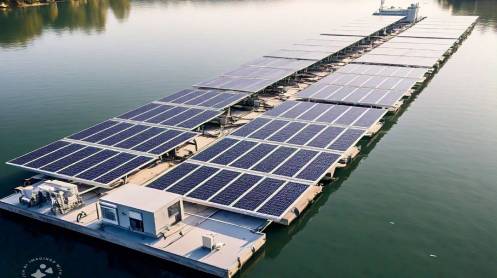Pakistan has decided to shelve a proposed $300 million floating solar power project, which was intended to generate 300 megawatts (MW) of electricity. The Power Division opted not to include the initiative in the 2024-2034 Indicative Generation Capacity Expansion Plan (IGCEP), citing the absence of an assured power purchaser.
On December 20, the Power Division formally conveyed its decision to the Ministry of Economic Affairs and the World Bank, effectively pausing preparations for the project. Initially planned for Tarbela and Ghazi Barotha hydropower reservoirs, the project was deemed economically viable, with projections indicating that its costs could be recovered within five years.
Electricity generated by the floating solar facility was expected to be 60% cheaper than operating 64 existing thermal plants and 100% cheaper than 55 others. Furthermore, the project promised annual savings of $72 million in foreign exchange and significant environmental benefits.
WAPDA had highlighted the project’s competitiveness, revising its cost to $238 million and estimating a tariff of just 2.98 US cents per unit, the lowest in the region. Despite this, concerns over declining grid demand and off-grid generation trends influenced the decision.
While the government re-evaluates its long-term energy strategy, stakeholders remain hopeful that the project could be revived in the future as priorities shift. The World Bank reaffirmed its commitment to supporting Pakistan’s energy transition and emphasized the flexibility of its project pipeline.





